The Eucryphia family.
It’s important to be able to leave a legacy behind, of some structure of good work done which will enhance the community. Bita Duflon and I both loved trees, so please walk through your garden as well as these flavorings, get a sense of what is needed and plant accordingly.
I am not sure of what species or hybrid this is, as most are Japanese Maple size and this guy is much taller. Their amazing feature is the AUGUST bloom period. My first experience with this magnificent tree was at Whitney Gardens in Brinnon WA., circa the mid seventies. This is a magnificent seven acre nursery to visit!
The two-inch white flowers resemble apple blossoms — even in their fragrance! They are August bloomers and the picture to follow is from the same garden I started at, Alton Duflon’s, in Sequim WA. The tree will grow in full sun or light shade. It prefers well-drained soils, preferably on the acid side. This New Zealand/Chilean native dislikes hot, dry summer weather but thrives near the coast. Once established it is hardy into the teens.
The following picture is a closeup of the flowers.
There are two main species. Eucryphia glutinosa which is the hardiest of the species. It originates from Chili. Size variation is to be expected.
Eucryphia lucida is a more tender tree and is hardy only in the most protected of localities in our climate zone. Some blossoms can be pink.
E. x intermedia is a cross between these two species and is usually quite hardy. It thrives in this Dungeness garden of Rhododendrons and competes quite well with the knuckle bruiser Bay laurel it was paired with.
DWARF ARCTIC WILLOW — SALIX PURPUREA NANA
Not a willow shape in the classic sense but a graceful blue-wispy accent or border plant for the garden. Compact and refined it is easily shaped by pruning. Bonsai material even. I love the way it sways gracefully in a breeze, definitely an ornamental and can be used in hedges or in clumps. Its blueish foliage lends wonderfully with the burnt coppery tones of cryptomeria.
Salix purpurea ‘Nana’, is a fast grower and it will tolerate wet soil conditions. This shrub can be used individually, in clumps or even as a hedge, the slender, upright stems which makes for a soft looking shrub which waves beautifully in the wind. To keep it looking its best, provide regular pruning. The blue-green leaves are very attractive on the mounded shape. A fine textured shrub, with slender and supple twigs that can be used to make baskets
Autumn color — Parrotia persica
Essentially this is an upgraded form of the witch-hazel. Normaly it grows as a low-branched tree, typically two-thirds as broad as it is tall. I prefer to prune it up to a single trunked tree! Bark exfoliates as it ages and the leaves turn brilliant red, yellow and orange in autumn.
Enkianthus campanulatus-Redvein Enkianthus
Heptacodium miconioides -Heptacodium miconioides — a recent introduction from China.
Another interesting summer blooming tree is: Xanthoceras sorbifolium — Yellowhorn
Cotinus coggyria purpurea Purple Smoketree.
Deep purple leaves which hold color throughout the summer. These seedlings have been selected to assure you of receiving plants with uniform, dark purple leaves. Zones 5-8
Ginkgo biloba –Ducks foot tree
This ancient tree has survived many extinctions and charms us with its unique fan (duckfoot-shaped leaves and butter-yellow to brilliant gold fall color. It is very tolerant of urban pollution and thus I suggest this tree merits greater use. It is for large gardens only! These are seedling grown and might be either male or female. However, one needs both genders to create fruit, so buying one or even two of these would give you a landscape minus fruit drop, which can be nasty. — unless you luck out 🙂 I would guess that you would need at least three trees to get a potential fruit drop problem.
Another ode to Oakland Technical, being their gardener. I would help him out every now and then and he would give me bulbs in exchange, as well as good company.
DAWN REDWOOD METASEQUOIA GLYPTOSTROBOIDES
The dawn redwood is a deciduous conifer native to China. Thought to have been extinct for millions of years this plant was found growing in a few isolated sites in China in the 1940s. The dawn redwood is a very hardy upright growing tree. It is fast growing at 4 to 6 feet per year and makes for a good lumber tree as well. Plant a forest of them! I planted over a hundred Giant Sequoia on a forestation project here in Sequim, WA. They have really taken off, so will these.
Taxodium distichum
Bald Cypress
A wonderful timber tree valued for its wood decay resistance. This “southern” tree thrives from upstate New York to the high plains of Texas. It is a large tree but this conifer has warm yellow tones in autumn. Trouble free and easy to grow.
(C) 2009 Herb Senft

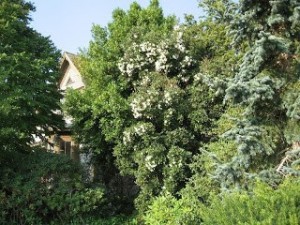
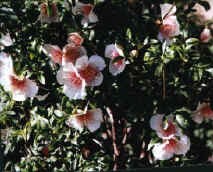
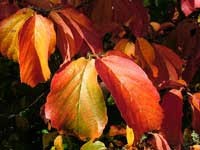
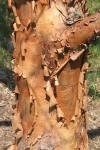
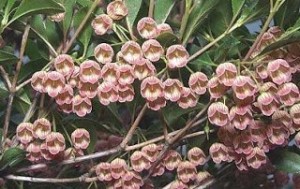



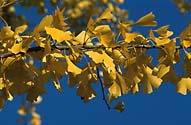
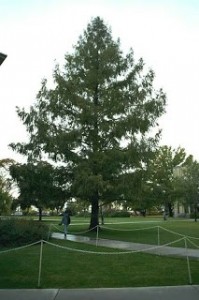
“I believe in the cosmos. All of us are linked to the cosmos. Look at the sun: if there is no sun, then we cannot exist.
So nature is my god. To me, nature is sacred; trees are my temples and forests are my cathedrals.”
Mikhail Gorbachev